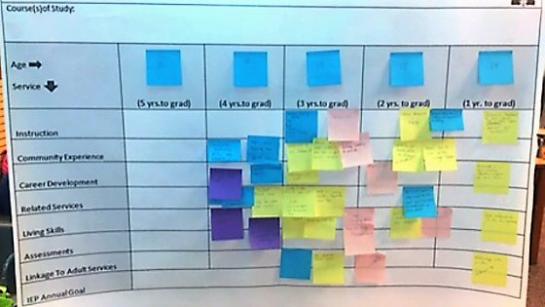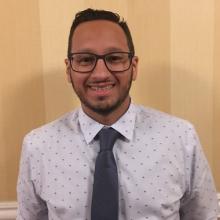4 Steps for Transition Planning: Valuing the Process

I know what you are thinking: “Great, another read on how to effectively use the PINS (Preferences, Interests, Needs, and Strengths) Model, career assessments, interviews, the writing of postsecondary goals, and so on.” While all of this is super important in writing quality transition plans, however, the process is – and should be – so much deeper than covering the surface of each component.
Ten years ago, I was sitting in an undergraduate class that focused on transition planning, and the professor made it clear on day one; if there was anything we were to take away from this class, it’s that the transition planning process should be: 1) started well in advance of the individualized education program (IEP), and 2) its own separate planning meeting.
Fast-forward to my first teaching job (and even a couple of years in). I was doing phone interviews with parents, in-person interviews with students, and drafting transition plans based on each student’s desired postsecondary goals. I received compliments from my colleagues and administrators on transition plans I developed, and I appreciated that. All sounds good, right?! Ehh, not really.
I took the summer of 2018 to really reflect and do a deep dive into how I approach the transition planning process with each student. And that’s when I completely revamped my approach. I thought about the concept from my undergraduate class, along with collaboration and communication among all team members.
We as teachers often hear and read about terms such as a “shared vision” when it comes to transition planning, but to see it manifest itself through a valued process is something that every student and team should experience.
We have a philosophy in our school district where we value the process over the product.
As special educators, we are tasked with the custom delivery of services that meet the individual needs of each child. We design and implement instruction to create a universal design for learning while enhancing students’ individual development and experience. This is all a process…an ever-evolving process of determining the right “fit,” intervention, or support for each child across multiple settings and various skills.
But before I dive into the process, I have to give credit to the Portage County Transition Cohort (Ohio) – which has helped me shape my process immensely over the past year – as well as my district Special Services team, colleagues, and admin who support and encourage teachers to be creative and innovative in their quest to do what is best for kids.
Now, here’s my approach:
Step 1:
With my transition planning process, the focus is when each student arrives at the high school (ninth grade). In advance of the IEP meeting, I call a series of planning meetings. This is the start of a backward planning process.
Step 2:
The first of these planning meetings is a pre-IEP meeting with the student and his/her family, the student’s county case manager (Board of Developmental Disabilities), and a representative from a state agency who will assist with vocational readiness and training. In this meeting, I interview the student and family with feedback from both of the support professionals. The student’s responses build the core foundation, while responses and feedback from family and support professionals shape a shared vision.
Step 3:
After this meeting, I hold two separate meetings: a student-focused professional learning community (PLC) with my classroom staff and another PLC with district support staff and our Transition Coordinator. In these meetings, we use a grid that represents the transition goal framework, which also serves as the framework for our discussion across meetings. This helps me begin to formulate a shared vision for each student with input and feedback from ALL team members.
 We start with a blank grid and post-it notes of various colors. The post-it notes are color-coded and represent activities or experiences recommended from a professional(s) on the team. For example, pink may represent a related services team member such as the Speech-Language Pathologist, blue may represent the student, yellow may represent the student’s county caseworker, and so on.
We start with a blank grid and post-it notes of various colors. The post-it notes are color-coded and represent activities or experiences recommended from a professional(s) on the team. For example, pink may represent a related services team member such as the Speech-Language Pathologist, blue may represent the student, yellow may represent the student’s county caseworker, and so on.
Using post-it notes allows us to change and slide backwards or forwards to different experiences and activities that contribute to the shared vision of the student. After all, we, as teachers, understand the progress, life events, and other possible contributing factors (ex: pandemic) that can delay or, in some cases, advance each student’s timeline.

Step 4:
At the IEP meeting, we, as a team, unveil the full grid to the student and his/her family. I ask the student and the family to complete the grid at the first meeting, so the IEP meeting is a time to review and discuss the feedback that contributes to the vision for that student as added by the rest of the team. This is an opportunity to review and align proposed activities and experiences that ultimately support the student in achieving his/her postsecondary goals; thus, creating a solidified shared vision.
That vision starts and ends with a process, and it is in valuing that process where we as special educators can do the most for our students and their future. Planning and preparation on our own behalf can facilitate structure and support while building on overlooked skills and traits such as self-esteem, self-determination, self-advocacy, and confidence for our students.
My personal planning process may not be feasible for someone else’s teaching situation, but one thing we can all share is the importance of valuing the process. Regardless of your approach to transition planning, if you value the process, your students will appreciate the growth.
